Dear Artist,
At a recent soirée of old friends and colleagues there was a politician whose acquaintance I had made back in high school. He was a jerk then and, as far as I can see, he’s a jerk now. I found myself pleasantly moving around the room and not making eye contact with him. As a matter of fact, through the whole party I was blind to his existence. To my last Scotch I successfully avoided the renewal of our acquaintance.
A few days later, outdoors with friends in a complex and difficult environment, I realized I was doing the same thing with my painting. I disliked some areas in my work and avoided them. Other areas held my attention and kept me busy. Checking on my fellow painters, I was happy to note that some were stuck with the same sort of blind spots. This was a sophisticated “avoidance syndrome” and a previously unexplored mind trap, I thought, slipping into my irregular Freudian bonnet. It’s as if an area of the painting turns on you and alienates you. And you don’t see it properly because you don’t want to recognize it. For some of my fellow painters the background held their rapt attention while they neglected a difficult foreground. For some others, certain small areas around the painting became lost in the shuffle. For a few there was a big, blurred elephant. I figured the condition is probably caused by one’s experiences with previous successes and failures — parts that have previously given trouble.
How do you defeat the blind-spot syndrome? First, I rationalized, you need to accept that you will naturally favour some parts of your work more than others, and that’s okay. While your work is in progress, you need to move between confident, intuitive brushing and rational strategy. It takes both sides of your brain to find the blind spots. Ideally, let a few days pass before final decisions. When the time comes, cruise objectively as if through the eyes of another artist. The fixable blind spots will more readily appear. Leave the unfixable ones alone. A different workplace and lighting aid in this part of the process. If in your most lucid and confrontational moments your whole work strikes you as one big blind spot — bad design, bad composition, bad form, colour, stroking, etc. — and you find the condition persists through many consecutive efforts, you might give consideration to another profession such as politics or psychiatry.
Best regards,
Robert
PS: “I have the feeling that I’ve seen everything, but failed to notice the elephants.” (Anton Chekhov)
Esoterica: “Seeing is a gift that comes with practice,” says earth-lover and simplicity advocate Stephanie Mills. It seems to me that the evolved creative eye is capable of putting problematic patches aside in the full knowledge that a gentle return will be made when other items are further resolved. Learn to squint. In the words of Henri Cartier-Bresson, “One eye looks within, the other eye looks without.” Above all, be patient. “One looks, looks long,” said Joseph Campbell, “and the world comes in.”
This letter was originally published as “The blind spot” on September 13, 2011.
Have you considered a Premium Artist Listing? With each letter, an artist is featured at the bottom of this page. The Premium Artist Listings are a means of connecting artist subscribers through their work. Proceeds from each listing contribute to the production of The Painter’s Keys.
“Made a sketch later on the cabin verandah, but it was impossible to keep up with the changes. Oh the difficulties of mountain art for too little genius.” (J. E. H. MacDonald)
Featured Workshop
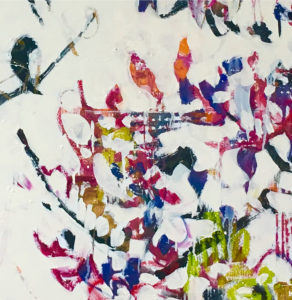 Join Ellie Harold for “Intuitive Painting: Permission to Paint Expressively,” designed especially for mature women artists of all skill levels who wish to explore this medium for soulful exploration. The retreat provides attractive accommodations (your own room!) along with lightly structured activities for centering, relaxation and low stress art-making. You’ll have plenty of free time to muse, paint, write and reflect while enjoying the colors, textures and flavors of San Miguel. This Retreat has the potential to transform not only your art but your life! You’ll return home with a specific art “care plan” to assure support for further creating. Details at www.EllieHarold.com.
Join Ellie Harold for “Intuitive Painting: Permission to Paint Expressively,” designed especially for mature women artists of all skill levels who wish to explore this medium for soulful exploration. The retreat provides attractive accommodations (your own room!) along with lightly structured activities for centering, relaxation and low stress art-making. You’ll have plenty of free time to muse, paint, write and reflect while enjoying the colors, textures and flavors of San Miguel. This Retreat has the potential to transform not only your art but your life! You’ll return home with a specific art “care plan” to assure support for further creating. Details at www.EllieHarold.com.
Featured Artist
Creativity has always been my calling however I didn’t realize that it would be primarily art related, until later in my life. Passing on knowledge is also a natural aspect of who I am. For me teaching skills to others is both a continuous joy and a personal education.
I love to draw and to paint with watercolor, pastel and mixed media, but I am also intrigued by the process and challenges of printmaking.
To me, figures and busts in clay just seem to come alive by themselves, in their own three dimensional world.
My subject matter is quite varied overall, but my personal favorites are always faces and figures of all types.

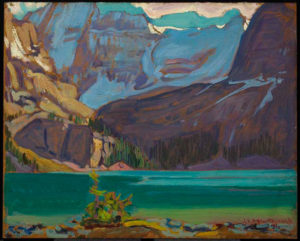
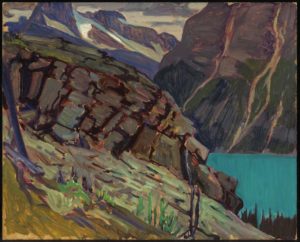
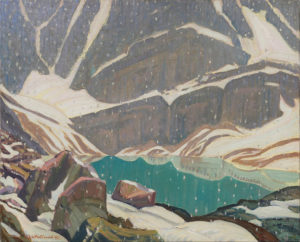
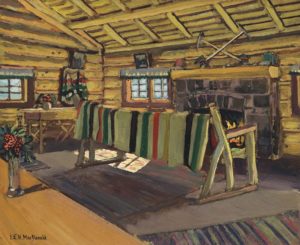
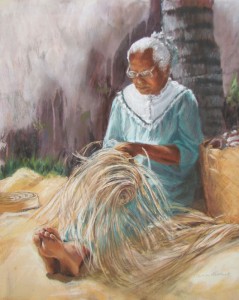



10 Comments
Love the topic. However, have to say how much I love the paintings of J.E.H. McDonald that accompanies the article. These images are the most abstract approaches that I have seen of McDonald. They are masterful.
I love MacDonalds paintings too particularly Mountain Solitude. I can feel the stillness.
As for blind spots, sometimes gesso is my best friend!
Love the last line of Robert’s letter and many times I ask myself why I continue in this field, but the passion for doing this is stronger than the resistance. Win some lose some! I struggled recently with a difficult subject, somewhat backlit, lots of leafy things. I’m so glad I didn’t give up. I ended up liking it a lot and got a lot of positive remarks from people and even sold it with no effort . If I go for what inspired the painting and forget about technique, but try to capture the joy that I felt, it always works. I see that MacDonald painted in oils on many different types of surfaces, I wonder how they affected the results. The final piece doesn’t indicate the surface. I’m curious about the colourful flooring in the right hand corner. Carpet? Reflections?
I’m betting that’s a hand crocheted rug. My Grandma made one from rags that was similar.
Maybe a rag rug, more like a mat.
As an artist, speaker, writer, and educator I have worked with one basic credo:
Build on strengths rather than focusing upon weaknesses
Here’s an example…
An artist and I will stand or sit before a piece of their art.
I asked them to quickly/spontaneously visually scan their painting and point out a spot that they really like / respond to positively.
Then we immediately cover the whole painting with plain paper and rip a hole right where that spot is.
Now the artist free-associates saying words, phrases, anything that describes this piece.
I write their responses on the paper surrounding the hole (if the painting is heavily textured, I write on a separate piece).
Now we have some great discussions.
Then.. we take the paper off and reveal the whole painting.. .which is now seen in a new light.
It could be that we continue this process ….or… the artist often wants to go and start a new painting with new insights in mind.
If you do this process for yourself or with others ..please think of me. Haha
Lessons learned here – Don’t invite a politician to a party. If invited to a party by a politician, decline gracefully.
I always enjoy reading the comments on these letters, especially the ones left ten years ago on the original posting. The life of the internet certainly has taken all kinds of twists and turns in how we participate with words. :) As for my take on Robert’s wise message here, yes, those wretched areas that fight me I call jerks as well. Funny how I avoid them, spend too much time nurturing the good areas that I like hoping the jerks go away. Perhaps I am a snob at heart, just can’t accept the inferior and wish to not spend any time with it. But, eventually, commit to the time needed to sort out or differences. And, when we do meet on a level plain of acceptance for each other, it’s as if I have taken a giant rock out of my shoe…aaaaaaah, THERE!!! I don’t have to become Prime Minister after all.
Terrific letter. I set my plein air work up in the living room and live with it a few days. The dead spots and the solutions generally reveal themselves. Poli-tick-cians are all the same and best avoided – they resemble the troublesome insects.
Thank you, Sara, for sending this post for me to be able to open it. Appreciate it!
Arthur Lismer came to mind as I read this post, mainly because he was part of MacDonald’s group of painters. He was the head of the Montreal Fine Arts Museum School of Art and Design which I attended in 1975-77.
This has nothing to do with painting, but a blind spot, yes. I was not aware that tea ought to be seeped for quit a while before pouring. I like weak tea; which may not be tea at all. But I got caught when pouring myself a cup of weak tea, by none other than Dr. Lismer, himself. ” No, no, no! You must let it steep.” I got my hand slapped and back on the stove it went. Brought a smile to my face remembering that scene.